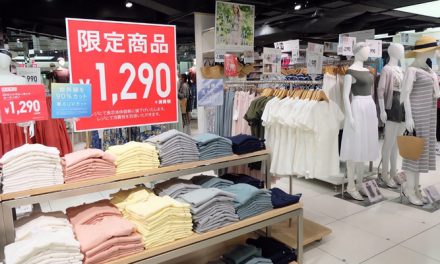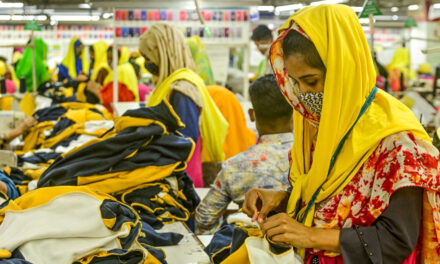 In 2023, Bangladesh’s garment sector faced challenges in the US market as exports of Bangladesh-made garments to the country decreased by $2.44 bn. Interestingly, the top five garment-exporting countries experienced similar declines. China’s apparel exports to the United States fell by $5.44 bn, Vietnam’s by $4.06 bn, India’s by $1.52 bn, and Indonesia’s by $1.42 bn.
In 2023, Bangladesh’s garment sector faced challenges in the US market as exports of Bangladesh-made garments to the country decreased by $2.44 bn. Interestingly, the top five garment-exporting countries experienced similar declines. China’s apparel exports to the United States fell by $5.44 bn, Vietnam’s by $4.06 bn, India’s by $1.52 bn, and Indonesia’s by $1.42 bn.
According to updated statistics from the Office of Textiles and Apparel (OTEXA) under the US Department of Commerce, US businesses imported $77.84 bn worth of clothing last year, down from $99.86 bn in the same period in 2022.
This marks a 22.05 percent decrease in US apparel imports compared to the previous year. The entrepreneurs of Bangladesh’s garment industry attribute the rapid increase in US inflation to the onset of the Russia-Ukraine war in 2022. Consequently, inflation in the United States surged to 9.1 percent in June of that year. This spike in inflation prompted US shoppers to scale back on non-essential purchases, leading to a decline in exports for garment-exporting countries.
However, garment industry entrepreneurs note that inflation in the United States has since come under control, with the rate dropping to 3.1 percent in January. Additionally, they report positive Christmas sales in December. As a result, they anticipate an uptick in the rate of purchase orders for the upcoming summer season.
In the outgoing year, China, the top apparel exporter to the US market, experienced a 24.98 percent decrease in exports of Chinese-made garments to the US, amounting to $16.31 bn. Vietnam, the second top exporter, saw a 22.29 percent decrease in exports, totaling $14.18 bn.
Bangladesh, the third top exporting country in this market, exported $7.29 bn worth of ready-made garments, marking a decrease of 24.98 percent compared to the previous year. In the previous year, 17.5 percent of Bangladesh’s total garment exports were destined for the United States.
Additionally, Bangladesh exported 2.26 bn square meters of cloth-made garments last year, representing a 27.94 percent decrease compared to the previous year’s export of 3.13 bn square meters of textile equivalents. Over a period of 10 years, Bangladesh’s garment exports to the US market have increased by 2.33 percent. In 2012, the export amount was $4.18 bn, while in 2022, apparel exports to the US market rose to $9.72 bn. However, within a year, exports fell by one-fourth.
Sheikh HM Mostafiz, the Managing Director of Cute Dress Industries, informed Prothom Alo that purchase orders from the United States are on the rise, along with an increase in orders from Canada and South America. Last year, the demand for ready-made garments decreased, leading to low purchase orders due to high stocks of goods in various US warehouses.
However, as stocks have diminished, purchase orders have begun to increase. Additionally, the demand for clothing is also rising. Exports of ready-made garments to the European Union (EU) experienced modest growth of only one and a half percent last year. According to EPB data, readymade garments worth $23.38 bn were exported to the EU last year.
Ashikur Rahman, Former Director of BGMEA, shared with Prothom Alo, “There were good sales in the United States during Christmas. As a result, we expect purchase orders to increase from next April to May. At that time, next year’s summer purchase orders will come. The winter purchase order that came before that is not too bad.”
Despite the decrease in exports from various countries to the US market, there has been no significant change in market share. Last year, China, Vietnam, and Bangladesh accounted for 21, 18, and 9 percent, respectively, of the US market in ready-made garment exports.
Fazlul Haque, Former President of BKMEA, the association of knitwear industry owners, shared with Prothom Alo, “Purchase orders are gradually coming in from the United States. It will take some time to gauge the pattern of purchase orders. We anticipate that the summer purchase orders will be satisfactory, even if the next winter purchase orders are not substantial.”


















